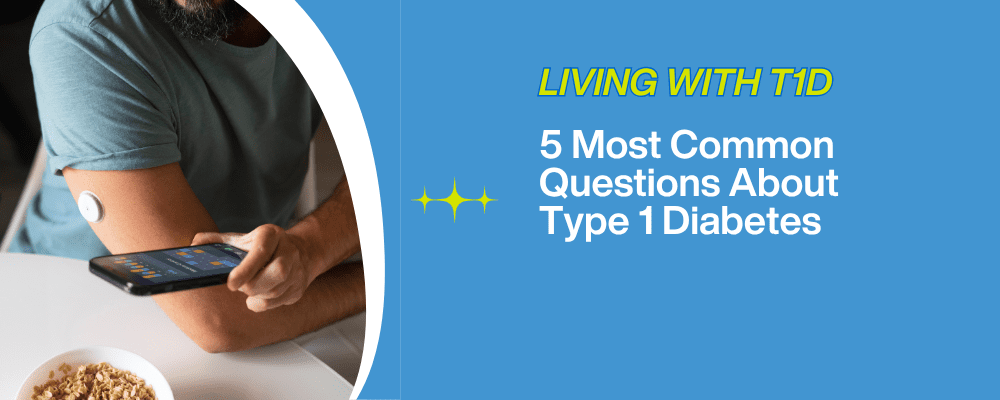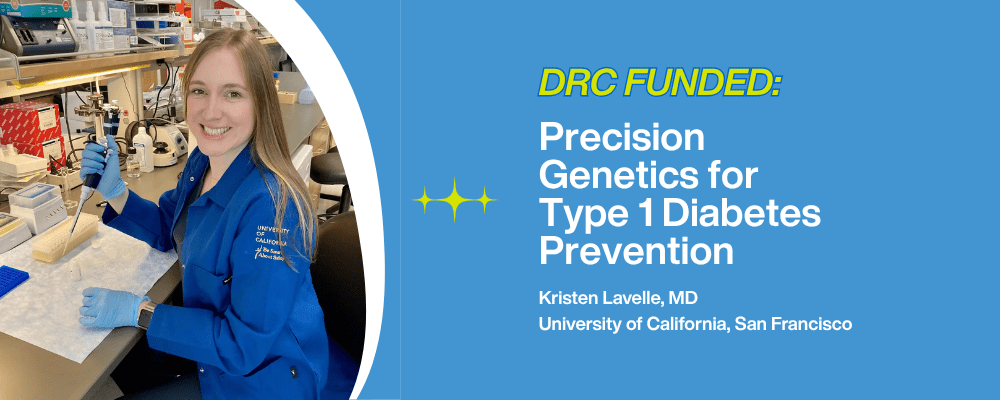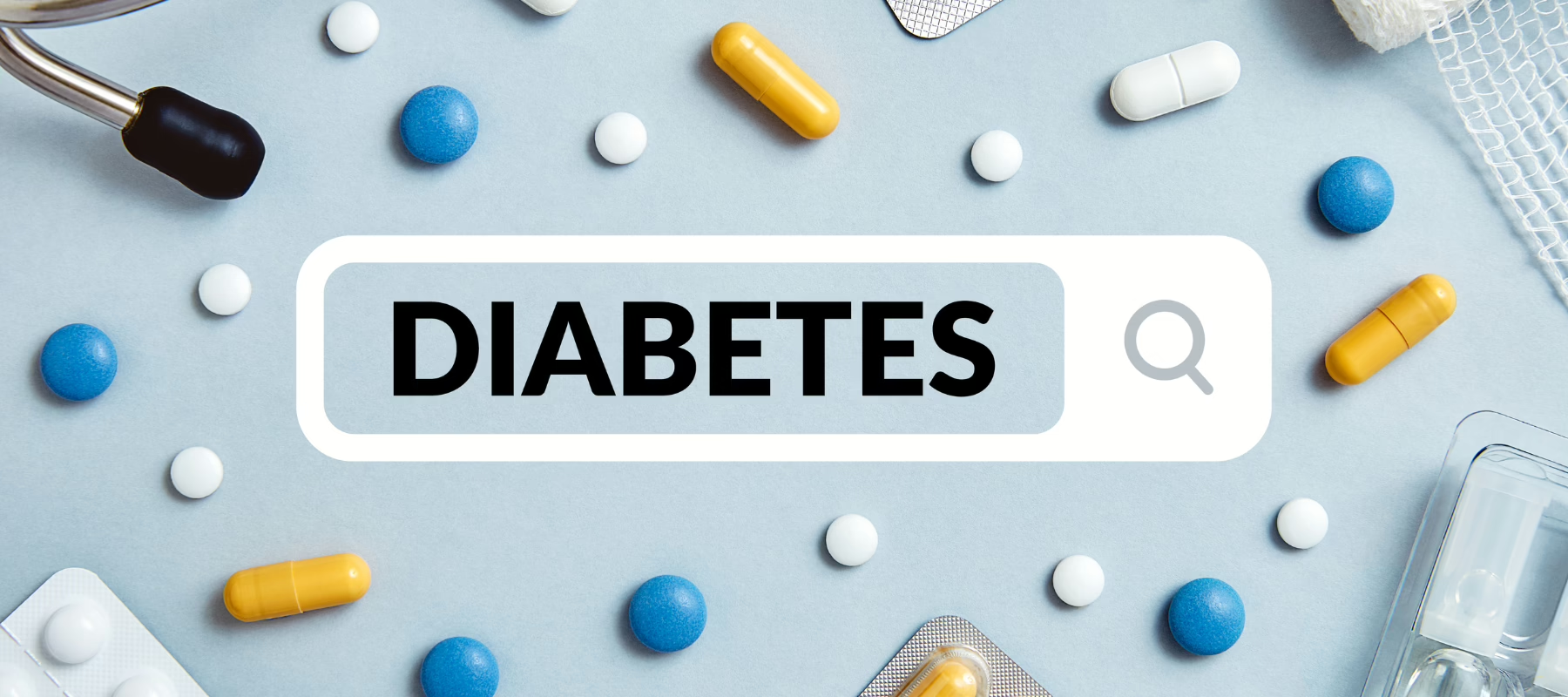Supporting T1D Care in Relationships
Valentine’s Day, the day of love, presents an ideal occasion to delve into the intricacies of relationships, particularly for couples navigating the challenges of Type 1 Diabetes (T1D). From understanding the condition and recognizing signs of hypo/hyperglycemia, to open communication and offering balanced support, we explore strategies to strengthen partnerships.
Understanding Type 1 Diabetes
The T1D journey requires careful management, and an understanding of how various factors can affect blood sugar levels. It’s a condition that demands continuous learning and adaptation.
For partners, understanding T1D is about more than just knowing the mechanics of blood sugar management. It’s about recognizing the emotional and psychological impact of the disease, the stress of constant vigilance, and the fears that come with potential long-term complications, all while showing empathy, patience, and support.
Support from a partner can significantly enhance the quality of life for someone with T1D, making the disease’s management less isolating. It involves understanding the balance between offering help and respecting the independence of your loved one, recognizing when to step in and when to step back.
Recognizing the Signs of Hypo/Hyperglycemia
A critical aspect of supporting a partner with Type 1 Diabetes is learning to recognize the signs of hypoglycemia (low blood sugar) and hyperglycemia (high blood sugar). These conditions can arise quickly and require immediate attention to prevent serious health complications. Understanding these signs and knowing how to respond is crucial in managing T1D effectively as a team.
Hypoglycemia (Low Blood Sugar)
Hypoglycemia occurs when blood sugar levels drop below the normal range. It can happen swiftly and without much warning, making it vital for both partners to recognize its symptoms early. Signs of hypoglycemia include:
- Shakiness or trembling
- Sweating
- Feeling dizzy or lightheaded
- Sudden mood changes, such as irritability
- Hunger
- Headache
- Paleness
- Confusion or difficulty concentrating
- In severe cases, loss of consciousness.
If you notice these symptoms in your partner, it’s essential to act quickly by offering them a fast-acting source of glucose, such as fruit juice, candy, or glucose tablets, and then monitoring their symptoms.
Hyperglycemia (High Blood Sugar)
Hyperglycemia, on the other hand, develops when blood sugar levels are too high. It can result from various factors, including insufficient insulin dosage, stress, or illness. Symptoms of hyperglycemia tend to develop more gradually and can include:
- Increased thirst and frequent urination
- Fatigue
- Blurred vision
- Headaches
- Difficulty concentrating
- In long-term cases, weight loss and skin infections.
Recognizing these signs early is key to preventing the situation from worsening. Effective communication about how your partner is feeling can play a critical role in managing these conditions. Encourage an open dialogue about symptoms and feelings, and discuss in advance how you can best support them during these times.
Having a plan in place for managing both can make these situations less stressful for both partners. This includes knowing where glucose supplies are kept and when to seek medical help.
Communication is Key
In the journey of managing Type 1 Diabetes within a relationship, open and honest communication stands as the cornerstone of support and understanding. The complexities of T1D can bring about situations that are both physically and emotionally taxing. Navigating these challenges smoothly requires a level of communication that is clear, compassionate, and consistent.
Expressing Needs and Concerns: Vital for sharing the T1D experience with partners, open discussions about daily challenges and health anxieties can strengthen relationships and enhance mutual understanding.
Listening with Empathy: Active listening, giving your full attention, and empathizing create a supportive environment for your partner with T1D, sometimes the best support is simply listening.
Navigating Daily Diabetes Management Together: Joint discussions on meal planning, exercise schedules, and medication management transform T1D care into a shared journey and make diabetes management a team effort.
Setting Boundaries and Expectations: Discussing each partner’s role in diabetes management and when to offer help or step back will prevent frustration later.
Using Positive Communication Techniques: Employing “I” statements can help avoid blame, for example, saying “I feel worried when I don’t know how your blood sugar is doing” is more constructive than saying “You never tell me about your blood sugar levels.”
Continuous Learning and Growth: Embracing communication as a dynamic, evolving process allows couples to adapt and refine their T1D care and support strategies through regular, thoughtful check-ins.
Open communication is not just about talking through the challenges of T1D; it’s about sharing victories, expressing gratitude, and celebrating milestones together. By prioritizing communication, couples can navigate the complexities of T1D with greater ease, understanding, and love.
Effective communication strengthens relationships and enhances diabetes management.
Support Without Smothering
Striking the right balance between offering support and allowing independence can be one of the most nuanced aspects of being in a relationship with someone who has Type 1 Diabetes. It’s about being supportive without being overbearing. This delicate balance requires understanding, respect, and communication.
Understanding the Need for Autonomy: Acknowledging your partner’s expertise in their diabetes management respects their autonomy, being there to assist, not take over.
Communicating How to Help: Openly discussing and respecting your partners’ choices for support ensures your efforts to help are truly beneficial.
Being Present Without Being Pervasive: Offering support when needed while respecting personal space strengthens your relationship without compromising your partner’s independence.
Educating Yourself: Gaining knowledge about T1D makes your support more effective and less intrusive.
Supporting Emotional Well-being: Being attentive to your partner’s emotional needs alongside their physical health creates a deeper, more supportive connection.
Setting Boundaries Together: Setting boundaries around diabetes management ensures both partners feel respected and maintain a healthy relationship overall.
Supporting a partner with T1D is about walking alongside them, offering a hand when needed, but always allowing them the space to lead their journey with diabetes.
Participation in Diabetes Management
Active participation in the diabetes management of a loved one can significantly enhance their well-being and the quality of your relationship. However, this requires a thoughtful approach, respecting boundaries, and promoting empowerment. Here’s how you can contribute effectively to managing Type 1 Diabetes as a partner, without overshadowing the person living with the condition.
Learn About T1D Together: Jointly learning about T1D by attending medical appointments, and staying updated on the latest research, demonstrating understanding and commitment.
Understand the Daily Routine: Familiarize yourself with your partner’s daily diabetes care routine, including insulin schedules, blood sugar monitoring, and recognizing the signs of hypo/hyperglycemia.
Share Responsibilities: Discuss ways you can share responsibilities by dividing tasks like medication reminders, supply refills, and medical appointments.
Emotional Support and Motivation: Providing emotional support by listening, offering encouragement, and celebrating milestones.
Create a Supportive Environment: Make lifestyle adjustments that support diabetes management, creating a home environment that prioritizes health.
Respect Independence: Supporting without taking over by respecting your partner’s autonomy in their T1D management and encouraging their self-care efforts.
Open Communication: Keeping communication channels open about how your partner prefers to manage their diabetes and how you can be involved.
Celebrate the Wins: Celebrate the successes, no matter how small, and recognize achievements together.
Managing Stress and Anxiety
Living with Type 1 Diabetes inevitably brings its own set of stressors and anxieties, not just for the individual managing the condition but also for their partner. The constant vigilance required for blood sugar monitoring, insulin management, and the potential for health complications can weigh heavily on both parties. Managing this stress and anxiety is crucial for maintaining individual well-being and the relationship’s health. Here are some strategies to help couples navigate these challenges together.
Recognize Stress Triggers: Identifying specific stress triggers related to T1D for both partners enables more targeted and effective stress management strategies.
Foster Open Communication: Enhancing your relationship and reducing isolation by creating a judgment-free space for sharing concerns and fears related to T1D.
Practice Stress-Relief Techniques: Strengthening your emotional bonds and supporting mental health by incorporating shared mindfulness and relaxation activities into daily routines.
Stay Active Together: Improving physical and mental well-being also serves as quality time to strengthen your relationship.
Seek Professional Support: Seeking support from a mental health professional who specializes in chronic conditions can be beneficial if dealing with stress and anxiety.
Join a Support Group: Connecting with others dealing with similar challenges can provide comfort and support, offering a sense of community and an opportunity to share experiences and strategies.
Prioritize Self-Care: Self-care is essential for managing stress and maintaining well-being, by encouraging each other to take time to recharge.
Celebrate Small Victories: Celebrating small victories along the way boosts morale and reduces anxiety.
Overcoming Challenges Together
Navigating the journey of Type 1 Diabetes (T1D) as a couple comes with its unique set of challenges. From managing daily care routines to addressing the emotional toll of living with a chronic condition, these challenges can test the strength and resilience of any relationship.
However, facing them together fosters a deeper understanding and connection and cultivates a partnership that is equipped to handle whatever comes its way. The key to overcoming these obstacles lies in teamwork, communication, and mutual support. Embracing each challenge as a team encourages growth and strengthens the bond between partners, transforming obstacles into opportunities for deeper connection and mutual support.
In our quest to explore the dynamics of managing T1D within relationships, we’ve talked to numerous couples who navigate these waters every day. Their experiences have highlighted common challenges they face and the strategies they use to overcome them.
Here are some questions answered by Jean and Alan, a couple who have been together for 45 years. Jean was diagnosed with T1D at 10 years old and they met when they were teenagers.
How do you provide support during your partner’s challenging T1D moments without feeling overbearing?
Alan finds it challenging when Jean doesn’t always heed his advice and tries to be there for her when she needs him, but normally picks up any changes before they get too serious. Jean strives to minimize disruptions and always plans for highs and lows by keeping things organized and prepared.
What are the most important things you’ve learned about T1D through your partner?
Jean does not take Alan for granted and trusts his judgment during low moments. Alan recognizes the significance of T1D management in their lives and sees it as part of their normal routine since meeting Jean.
How do you balance the need for T1D management with maintaining a normal relationship routine?
Alan has never thought about T1D in their relationship; it’s just part of their lives, and Jean strives to minimize disruptions. Planning for everything and always being prepared.
How do you communicate effectively about T1D-related needs and concerns?
Alan’s biggest concern is medication and checks in regularly that Jean has enough supplies. Jean is concerned about the challenges of legal issues regarding her healthcare, especially as they are not legally married.
What challenges have you faced as a couple due to T1D, and how have you overcome them?
Jean is aware of the high costs associated with T1D, insurance issues, and Alan’s help with medical appointments. Jean’s vision impairment and Alan having no health insurance pose additional hurdles. Despite these challenges, they see their involvement in each other’s lives as quality time spent together.
Expert Perspective from Susan Guzman, PhD, Director of Clinical Education at the Behavioral Diabetes Institute
Susan Guzman shares invaluable perspectives on the challenges faced by couples managing T1D within their relationship. She emphasizes the common struggles such as balancing family routines, resolving conflicts related to T1D management, and coping with financial burdens.
According to Susan, the cornerstone of navigating these challenges lies in open communication, empathy, and education. She points out the importance of avoiding assuming a caregiver role, emphasizing the desire for partnership instead. “It is really about communication,” she explains. “The caregiving role is not what we want, we want a partner. It may be more for some people and less for others. It is about good communication and finding that right balance which is different for everybody.”
When asked for advice on maintaining a healthy relationship, Susan offers an important reminder: “Always come back to remembering you are on the same side.” She advocates for clear communication about needs, wants, and expectations, and encourages partners to ask for the help they need while offering support in return.
What are the typical issues/challenges/fears these couples face?
- Balancing family routines
- Resolving conflicts related to T1D management
- Coping with heightened emotions
- Addressing imbalances in responsibilities
- Managing the financial strain of T1D care
- Dealing with stress from hypoglycemia, including disruptions in sleep and alerts from Continuous Glucose Monitors (CGMs).
How do individuals help their spouse without taking on a “caregiver” role? Susan recommends a focus on open communication regarding roles and responsibilities and avoid overstepping boundaries that could lead to assuming a caregiver role.
This can be challenging if the spouse/partner with T1D is not managing their care effectively. In these cases, Susan advises:
- Begin with empathy to understand the challenges they face
- Educate yourself on T1D management to offer informed support
- Ask your partner about their needs and concerns regarding their care.
Last, Susan reminds couples to “Always prioritize your partnership, remembering you are on the same side and engage in honest conversations about your needs and aspirations within the relationship.”
Other Ways to Help
Supporting diabetes research and education is a powerful way to contribute to the well-being of those living with Type 1 Diabetes (T1D) and to the broader quest for a cure. With advancements in medical research and educational resources, individuals with T1D can lead fuller, healthier lives.
Donating to Research Organizations: Accelerating T1D research and moving closer to a cure with every donation to organizations like the Diabetes Research Connection.
Participating in Fundraising Events: Boosting research funding and T1D awareness through active participation in charity runs, auctions, and galas.
Volunteering Your Time: Contributing to diabetes care and awareness by volunteering skills and time to support the operations of diabetes-focused nonprofits.
Educating Yourself and Others: Becoming an informed T1D advocate by learning and sharing accurate diabetes information to combat stigma and inspire support.
Advocating for Better Policies: Shaping a brighter future for those living with T1D by advocating for policies that enhance research funding and healthcare access.
Your support can drive research forward and help educate the community about T1D. Contribute to the fight against T1D by donating, volunteering, or participating in events through Diabetes Research Connection.
Empowering Change Together
As we reflect on the importance of love, support, and understanding in managing Type 1 Diabetes within relationships, especially during the heartfelt month of February, it’s clear that these elements are crucial for navigating the journey with T1D.
Our exploration of strategies for effective communication, balanced support, and active participation in diabetes management highlights the profound impact of partnership and empathy. However, our efforts shouldn’t stop at personal or relational levels. The section “How to Help” emphasizes the powerful role we all can play in the broader fight against T1D.
Supporting research initiatives and educational programs is essential for advancing our understanding of T1D, developing new treatments, and ultimately, finding a cure. Whether it’s through donations, participating in fundraising events, volunteering, or advocating for policy changes, each action contributes to a larger wave of support that can transform the lives of those living with T1D. By educating ourselves and others, we also help dismantle stigmas and spread awareness, fostering a more inclusive and supportive society.
In closing, let’s remember that managing Type 1 Diabetes, both within relationships and in the wider community, requires a collective effort. Together, by offering support to our partners and contributing to diabetes research and education, we can make a significant difference.
Join the Diabetes Research Connection community today. Support diabetes research and education to make a meaningful difference in the lives of those affected by type 1 diabetes.




